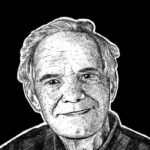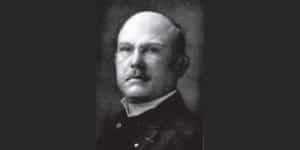Robert Cialdini biography and books

Robert Cialdini (1945) is a psychologist, researcher, author and speaker in the field of psychology, and particularly the theme of influence and persuasion. His famous theory, the Six principles of influence, is a theory that he has been preaching for years with regard to achieving goals. As a result, Robert Cialdini is considered a guru in this field.
Robert Cialdini biography
Robert Cialdini holds a doctorate (Ph.D.), from the University of North Carolina. He was also visiting professor at several universities including Stanford University, University of California (United States), Ohio University (USA) and the Annenberg School for Communication. Cialdini does not do this anymore as he is Professor Emeritus at Arizona State University.
Influence and persuasion
Cialdini is also an active entrepreneur and has a consulting and training organization called INFLUENCE AT WORK. The agency focuses on ethical influence and persuasion training, customized corporate programmes and has its own certification programme called ‘Cialdini Method Certified Trainer (CMCT)’.
Robert’s clients include a large number of international organizations such as Google, Microsoft, Cisco Systems, Bayer, Coca Cola, KPMG, AstraZeneca, Ericsson, Kodak, Merrill Lynch, Nationwide Insurance, Pfizer, AAA, Northern Trust, IBM, GlaxoSmithKline and many more.
One of his best-selling books is Influence: Science and Practice (1981). Over the years this book of Robert Cialdini has been developed using peer studies and has been revised many times due to new angles of approach. The book has sold over 2 million copies and is a New York Times best-seller published in 27 languages.
Famous quotes by Robert Cialdini
- “A well-known principle of human behaviour says that when we ask someone to do us a favour we will be more successful if we provide a reason. People simply like to have reasons for what they do.”
- “Embarrassment is a villain to be crushed.”
- “The customers, mostly well-to-do vacationers with little knowledge of turquoise, were using a standard principle—a stereotype—to guide their buying: expensive = good.”
- “The truly gifted negotiator, then, is one whose initial position is exaggerated enough to allow for a series of concessions that will yield a desirable final offer from the opponent, yet is not so outlandish as to be seen as illegitimate from the start.”
- “The obligation to receive reduces our ability to choose whom we wish to be indebted to and puts that power in the hands of others.”
- “By concentrating our attention on the effect rather than the causes, we can avoid the laborious, nearly impossible task of trying to detect and deflect the many psychological influences on liking.”
- “Our best evidence of what people truly feel and believe comes less from their words than from their deeds.”
- “It appears that commitments are most effective in changing a person’s self-image and future behaviour when they are active, public, and effortful.”
- “The more effort that goes into a commitment, the greater is its ability to influence the attitudes of the person who made it.”
- “Whenever one takes a stand that is visible to others, there arises a drive to maintain that stand in order to look like a consistent person. For appearances’ sake, then, the more public a stand, the more reluctant we will be to change it.”
- “Pre-suasion is what you say immediately before you deliver your message that leverages your success tremendously.”
- “The joy is not in experiencing a scarce commodity but in possessing it.”
- “There’s a difference between a mystery and a question. Questions demand answers, but a mystery demands something more valuable-explanation.”
Publications and books by Robert Cialdini et al.
- 2016. Pre-Suasion: A Revolutionary Way to Influence and Persuade. Simon and Schuster.
- 2014. The small BIG: small changes that spark big influence. Grand Central Publishing.
- 2013. Influence. Pearson.
- 2009. Yes!: 50 Scientifically Proven Ways to Be Persuasive. Free Press.
- 2008 / 2001 / 1981. Influence: Science and Practice. Harper Business.
- 2007. The Constructive, Destructive, and Reconstructive Power of Social Norms, Journal: Psychological Science – PSYCHOL SCI, vol. 18, no. 5, pp. 429-434.
- 2004. Social Influence: Compliance and Conformity, Journal: Annual Review of Psychology – ANNU REV PSYCHOL, vol. 55, no. 1, pp. 591-621.
- 2002. Social Psychology: Unraveling the Mystery. Allyn & Bacon.
- 2001. The Science of Persuasion, Journal: Scientific American – SCI AMER, vol. 284, no. 2, pp. 76-81.
- 2001. Training in ethical influence. In J. Darley, D. Messick, and T. Tyler (Eds.). Social influences on ethical behavior in organizations (pp. 137–153). Mahwah, NJ: Erlbaum.
- 2001. Influence: Science and practice (4th ed.). Boston: Allyn & Bacon. ISBN 978-0-205-60999-4.
- 1997. Reinterpreting the empathy-altruism relationship: When one into one equals oneness, Journal: Journal of Personality and Social Psychology – PSP , vol. 73, no. 3, pp. 481-494
- 1993. The transsituational influence of social norms, Journal of Personality and Social Psychology – PSP , vol. 64, no. 1, pp. 104-112
- 1992. Understanding The Decision to Participate in a Survey, Journal: Public Opinion Quarterly – PUBLIC OPIN QUART , vol. 56, no. 4
- 1990. A focus theory of normative conduct: Recycling the concept of norms to reduce littering in public places, Journal of Personality and Social Psychology – PSP, vol. 58, no. 6, pp. 1015-1026.
- 1985. Influence: How and why people agree to things. Quill.
- 1984. Mood influences on helping: Direct effects or side effects? Journal of Personality and Social Psychology – PSP, vol. 46, no. 2, pp. 357-364.
- 1982. Self-relevant scenarios as mediators of likelihood estimates and compliance: Does imagining make it so? Journal of Personality and Social Psychology – PSP, vol. 43, no. 1, pp. 89-99.
- 1980. Two indirect tactics of image management: Basking and blasting, Journal of Personality and Social Psychology – PSP, vol. 39, no. 3, pp. 406-415.
How to cite this article:
Van Vliet, V. (2012). Robert Cialdini. Retrieved [insert date] from Toolshero: https://www.toolshero.com/toolsheroes/robert-cialdini/
Original publication date: 04/06/2013 | Last update: 04/18/2023
Add a link to this page on your website:
<a href=”https://www.toolshero.com/toolsheroes/robert-cialdini/”>Toolshero: Robert Cialdini</a>











